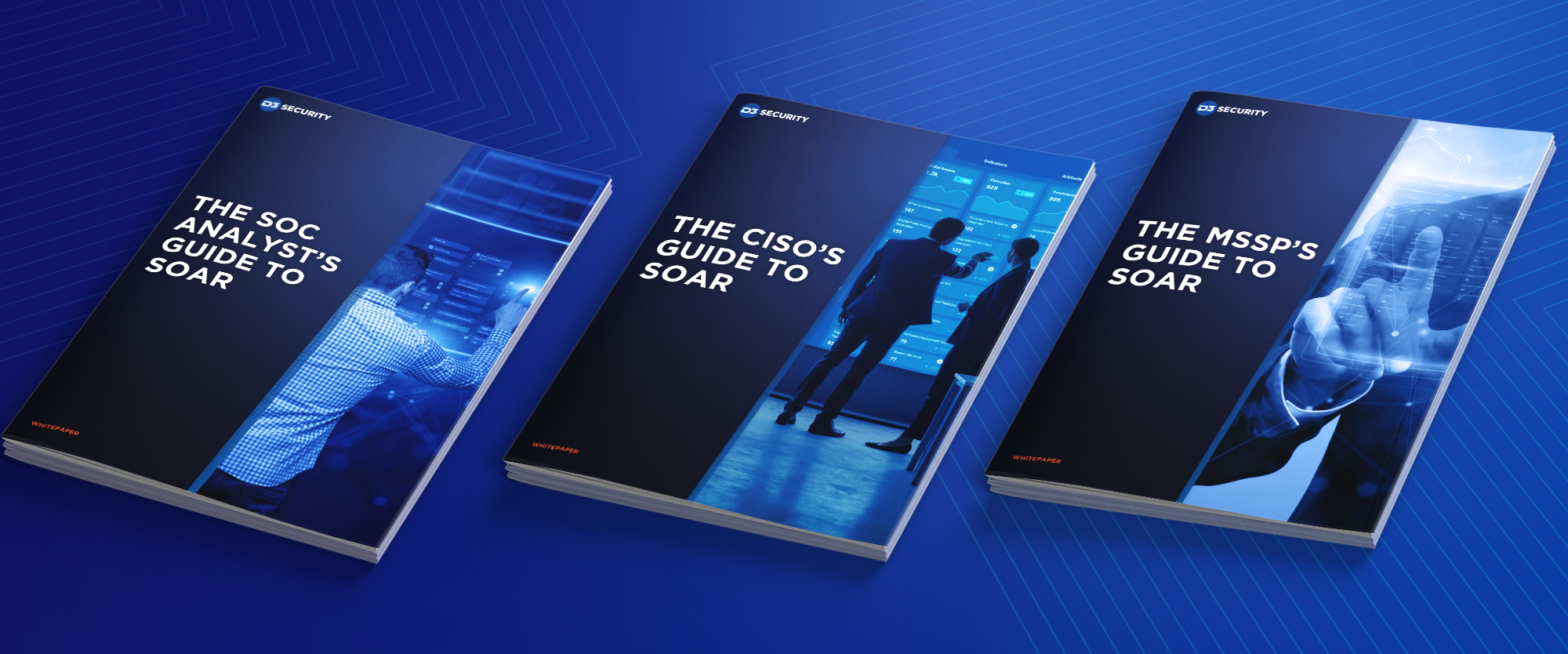

We recently published three guides to SOAR (security orchestration, automation, and response) that are each specialized to a specific audience. The three audiences are security operations center (SOC) analysts, chief information security officers (CISOs), and managed security service providers (MSSPs). No matter what your role is, you’ll probably find at least one of them relevant to your concerns.
In this blog, we’ll summarize some of the SOAR features and benefits we cover in each guide, and why they’re relevant to each role. Be sure to check out the complete guides to SOAR in our resource library to get much more detail.
The SOC Analyst’s Guide to SOAR
SOAR for SOC Analysts
We’re using the title of SOC Analyst to describe a range of roles. This guide is for anyone who is on the front lines of security operations and incident response. These are the people who know better than anyone how frustrating the average SOC can be. They will also be the first to see the benefits of SOAR.
The most obvious benefit of SOAR for SOC analysts is how it streamlines alert-handling. With automated enrichment, auto-closing of false positives, and risk scoring, analysts that use SOAR no longer have to spend all day manually wading through hundreds of undifferentiated alerts.
SOC analysts spend more time using security tools than anyone else, so they also benefit from how SOAR provides a better digital workspace, through dashboards and workflows. SOAR consolidates important data from across the environment to give analysts the information they need, and the ability to drill deeper when necessary.
SOAR for CISOs
Our SOAR guide for CISOs isn’t just for the C-suite. It’s for anyone who is in charge of security in their organization. This guide isn’t about day-to-day SOAR features; it focuses on the higher-level security concerns, like making the most of your resources, turning those resources into value for the business, and proving that value to the board.
One of the core SOAR benefits for CISOs is how it helps offset staffing shortages. For more junior positions, SOAR automates away so many repetitive tasks, that teams are able to get by with fewer members if they need to. On a fully staffed team, this means CISOs can reallocate resources to more important things than endless alert-handling.
SOAR also helps CISOs fill more senior positions. Codifying processes in playbooks make it easier to share knowledge, bring people up to speed, and guide them through complex workflows. Intelligent SOAR workflows enable your team members to contribute beyond their experience levels.
SOAR for MSSPs
Our third guide to SOAR isn’t for a role, but rather a type of company—MSSPs. Interest in SOAR has grown dramatically among small-and-medium-sized businesses, but they lack the size to operate it effectively themselves. Managed service providers have become the main way for this segment of the market to leverage SOAR.
SOAR helps MSSPs streamline their operations and increase their revenue in several ways, which are detailed in the guide. However, maybe the most important advantage SOAR can provide MSSPs is the ability to offer MDR-style services. Managed detection and response (MDR) has recently emerged as a major challenge to MSSPs, offering deeper services powered by EDR and XDR solutions. MSSPs need to evolve in order to keep up, and SOAR helps them do so.
SOAR’s vendor-agnostic integrations, structured response processes, and automated event pipeline give MSSPs the toolkit they need to compete with MDRs.
Find Your “Guide to SOAR”
If you have questions about how security orchestration can help you in your role, be sure to download your free copy of one of our guides to SOAR. You can find them all in our resource library:
